What Is the Best Color Changing Foundation

Many people find themselves asking, "How can I change the color of my hydrangeas?" Hydrangeas are fascinating in that, unlike most other plants, the color of their flowers can change dramatically.
It would be nice if one could change the color of hydrangeas as easily as it changes in this little picture. But for most of us, it is not easy. The people who have the most control over the color of their hydrangeas are those who grow them in containers. It is much easier to control or alter the pH of the soil in a container than it is in the ground.
On the other hand, hydrangeas often change color on their own when they are planted or transplanted. They are adjusting to the new environment. It is not unusual to see several different colors on one shrub the next year after planting.
It is much easier to change a hydrangea from pink to blue than it is from blue to pink. Changing a hydrangea from pink to blue entails adding aluminum to the soil. Changing from blue to pink means subtracting aluminum from the soil or taking it out of reach of the hydrangea.
That said, we'll give the best information that I have on this subject and let you take it from there.
*Commercial growers of greenhouse hydrangeas (and others interested in this subject), see the two notes at the bottom of this page.
Change Hydrangea Color to Pink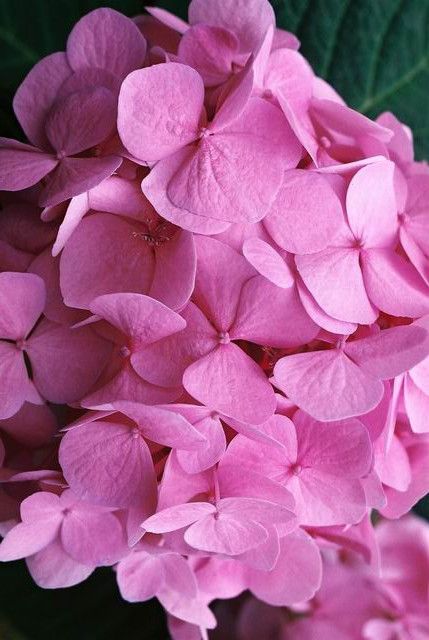
For hydrangea blooms to be pink, the plants must not take up aluminum from the soil. If the soil naturally contains aluminum, one must try to keep it away from the hydrangea's system. Following are a few tricks that might work:
Add dolomitic lime several times a year. This will help to raise the pH. Shoot for a pH of about 6.0 to 6.2 (If it goes above 6.4 hydrangeas may experience an iron deficiency). Since hydrangeas take up aluminum best at lower pH levels, raising the pH will help to keep the bluing effect of aluminum out of the hydrangea's system.
Use a fertilizer with high levels of phosphorus. Phosphorus helps to prevent aluminum from creeping into the system of the hydrangea. Choose a fertilizer close to the ratio of 25/10/10 (Phosphorus is the middle number).
In areas that naturally produce blue hydrangeas (soils with aluminum), consider growing pink hydrangeas in large pots. If hydrangeas are grown in pots, it would be best to use soil-less mixtures, since these mixes would probably not have aluminum in them. In a pot, it will be much easier to control the requirements for growing pink hydrangeas.
Change Hydrangea Color to Blue
To obtain a blue hydrangea, aluminum must be present in the soil. To ensure that aluminum is present, aluminum sulfate may be added to the soil around the hydrangeas.
Authorities recommend that a solution of 1/2 oz (1 Tbsp) aluminum sulfate per gallon of water be applied to plants (which are at least 2-3 years old) throughout the growing season. Important: Water plants well in advance of application and put solution on cautiously, as too much can burn the roots.
To make the aluminum available to the plant, the pH of the soil should be low (5.2-5.5). Adding aluminum sulfate will tend to lower the pH of the soil. Another method for lowering the pH is to add organic matter to the soil such as coffee grounds, fruit and vegetable peels, grass clippings etc.
If the soil naturally contains aluminum and is acid (low pH) the color of the hydrangea will automatically tend toward shades of blue and/or purple.
The choice of fertilzer will also affect the color change. A fertilizer low in phosphorus and high in potassium is helpful in producing a good blue color(25/5/30 is good. Potassium is the last number). Superphosphates and bone meal should be avoided when trying to produce blue.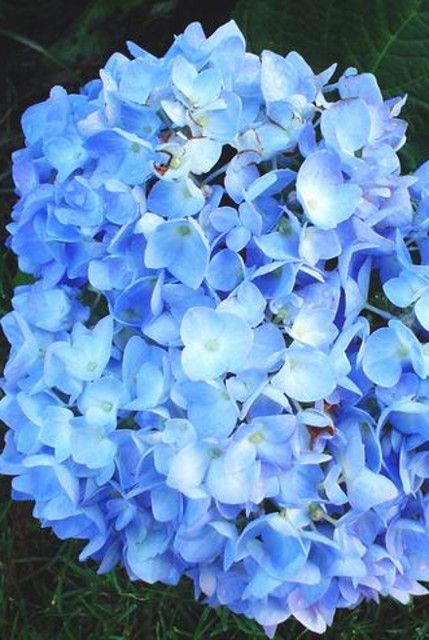
After stating this with much certainty, I hasten to add that it is virtually impossible to turn a hydrangea blue for any length of time if it is planted in soil with no aluminum and that is highly alkaline (chalky). One would have to be very diligent in keeping the soil properly conditioned as stated above.
Perhaps the best idea for growing blue hydrangeas in an area with alkaline soil would be to grow them in very large pots using lots of compost to bring the pH down. The above suggestions for bluing would also work for a potted plant. Reduce the strength of the Aluminum sulfate to 1/4 oz per gallon of water. In a pot, it will be much easier to control the requirements for bluing.
One last suggestions for those who are serious about this process. It is important to have your water tested so that it will not "contaminate" the soil that you have so rigorously balanced. The pH of the water should not be higher than 5.6.
Planting hydrangeas near a concrete foundation or sidewalk will often affect the color since the pH of the soil may be raised considerably by lime leaching out of these structures, making it difficult to obtain blue.
Limitations to Hydrangea Color Change
WHITE HYDRANGEAS can NOT be changed to pink or blue by the grower. (The Almighty sometimes adds pink and red to blooms as they age).
If you live in a hot climate, it is unlikely you will ever see a "true red" hydrangea. No matter how convincing those pictures in the catalogs are or how much lime is added to the soil, one can only achieve a very deep or dark pink, but not a true red (at least here in the South. I'd love to hear from you if you have a different experience).
One can rarely change the intensity of a color (how strong or pale the color is). The intensity develops for a number of reasons: the heredity of a particular hydrangea variety, weather conditions (hot or cold, humid or dry), health of the plant, and possibly other natural factors. Fertilizing hydrangeas once or twice a year may result in a little more saturated color simply because the health of the plant may be improved.
A few varieties of hydrangeas tend more toward the pink or the blue range of colors, but will not retain even this color if soil conditions are not right.
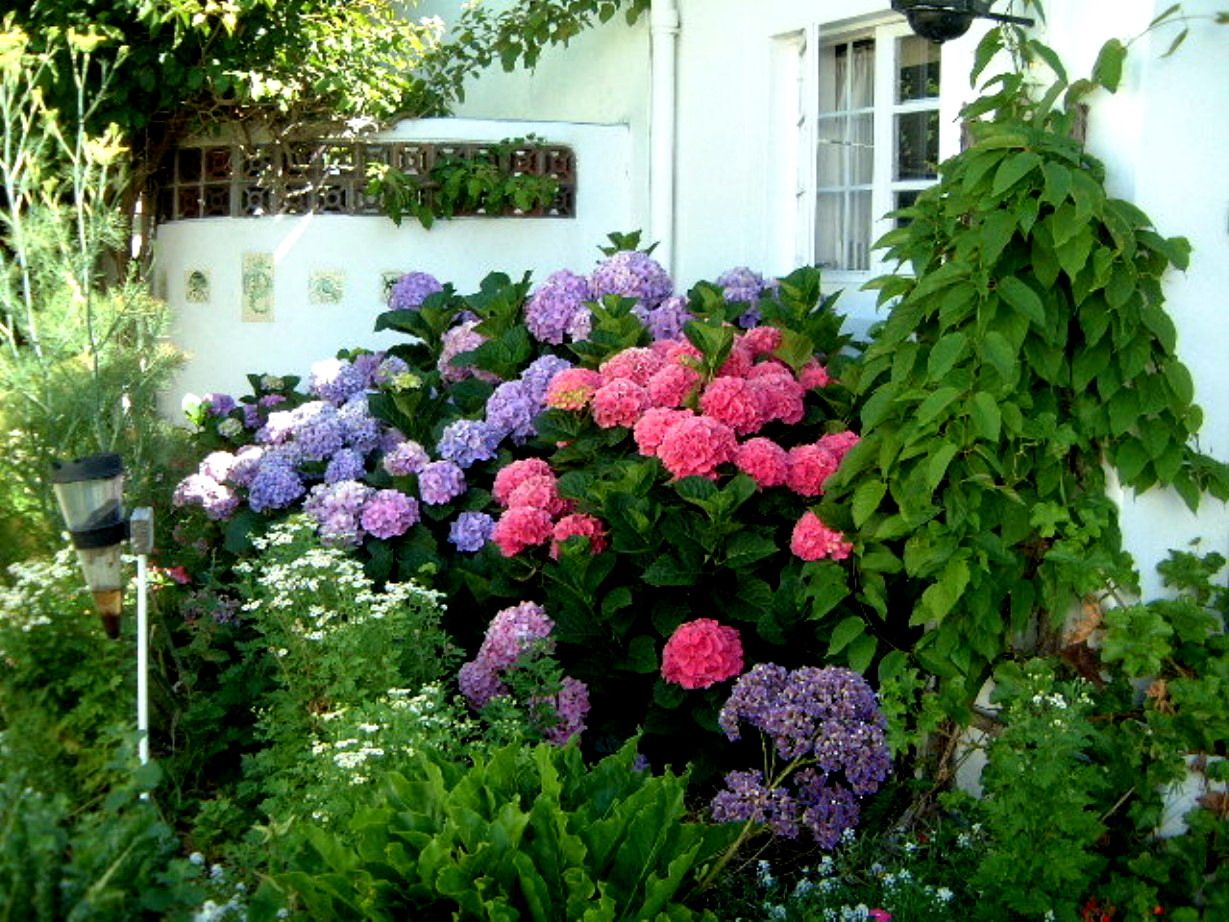
*NOTE TO COMMERCIAL GROWERS:
Douglas Bailey of the University of Georgia is an expert in floraculture. His Commercial Hydrangea Forcing presents information on hydrangeas for commercial growers in a readable, concise form. It includes a section on controlling flower color for the industry.
TED STEPHENS, horticulturist and owner of Nurseries Caroliniana, in South Carolina, wrote:
"Generally, an acidic or low pH will induce 'blueness'; whereas, a higher or alkaline pH will induce 'pinkness or redness'. Work in England seems to indicate that higher aluminum content influences blueness more than pH levels.
We gave Dr. Jim Midcap of the U. of GA a number of plants on which to run "color changing" experiments. By applying aluminum sulphate at the rate of 2 ounces in a 3 gallon container, he was able to change 'Masja', which is normally a red, to a brilliant blue. This application was made as soon as flower buds were evident in the new shoots in the spring, about 6 weeks before flower maturity."
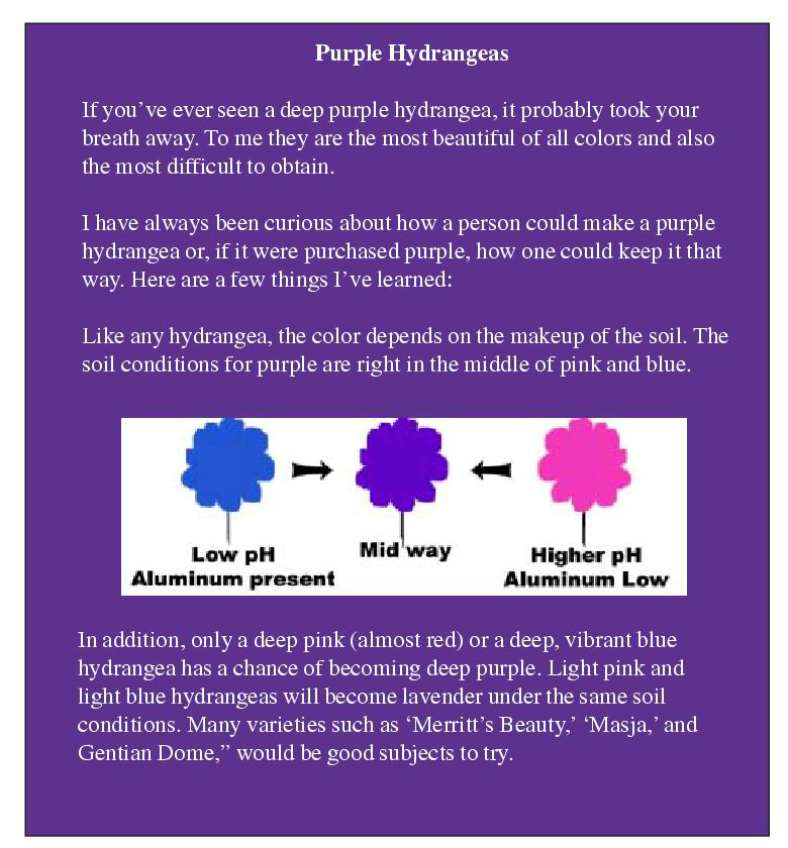
Shop Hydrangeas By Color:
Blue Hydrangeas
Green Hydrangeas
Pink Hydrangeas
Purple Hydrangeas
Red Hydrangeas
White Hydrangeas
More Information:
Hydrangea Flowers Fading
This page contains affiliate links to products on Amazon. We may receive a commission for purchases made through these links.
Shop Popular Hydrangeas

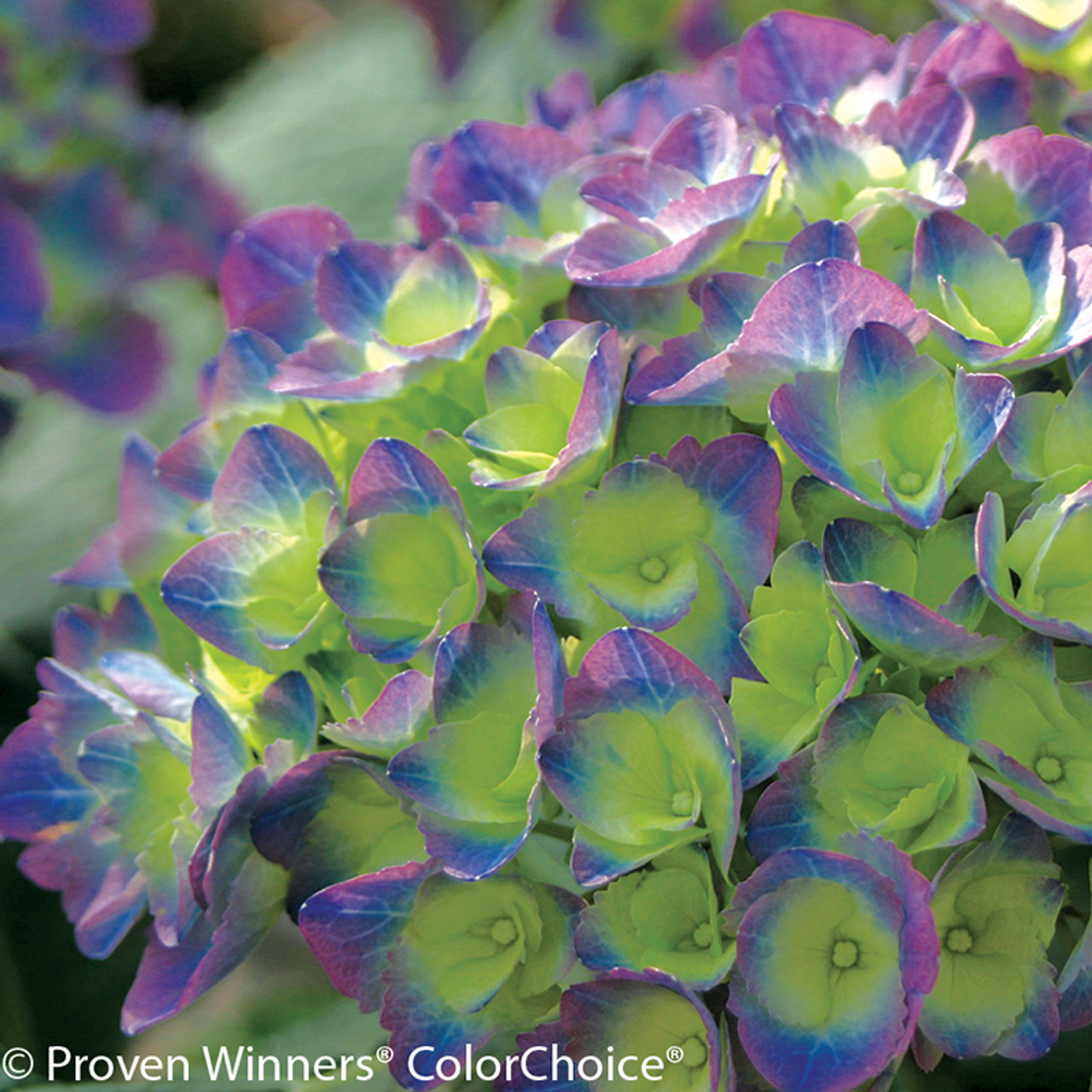
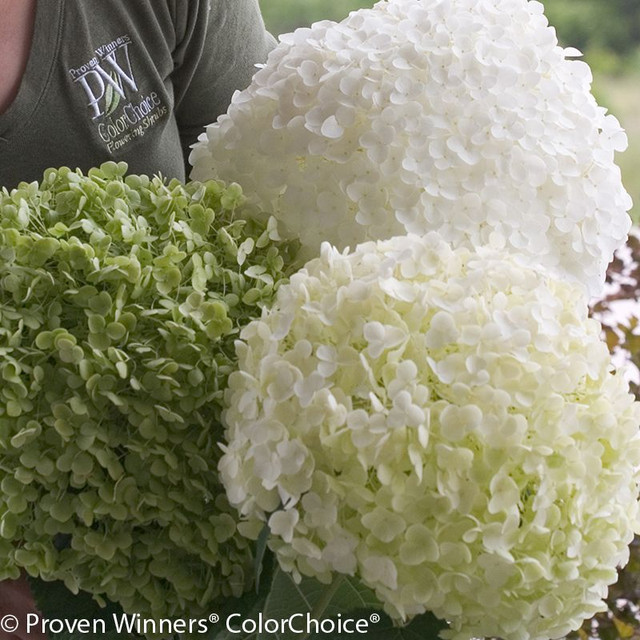

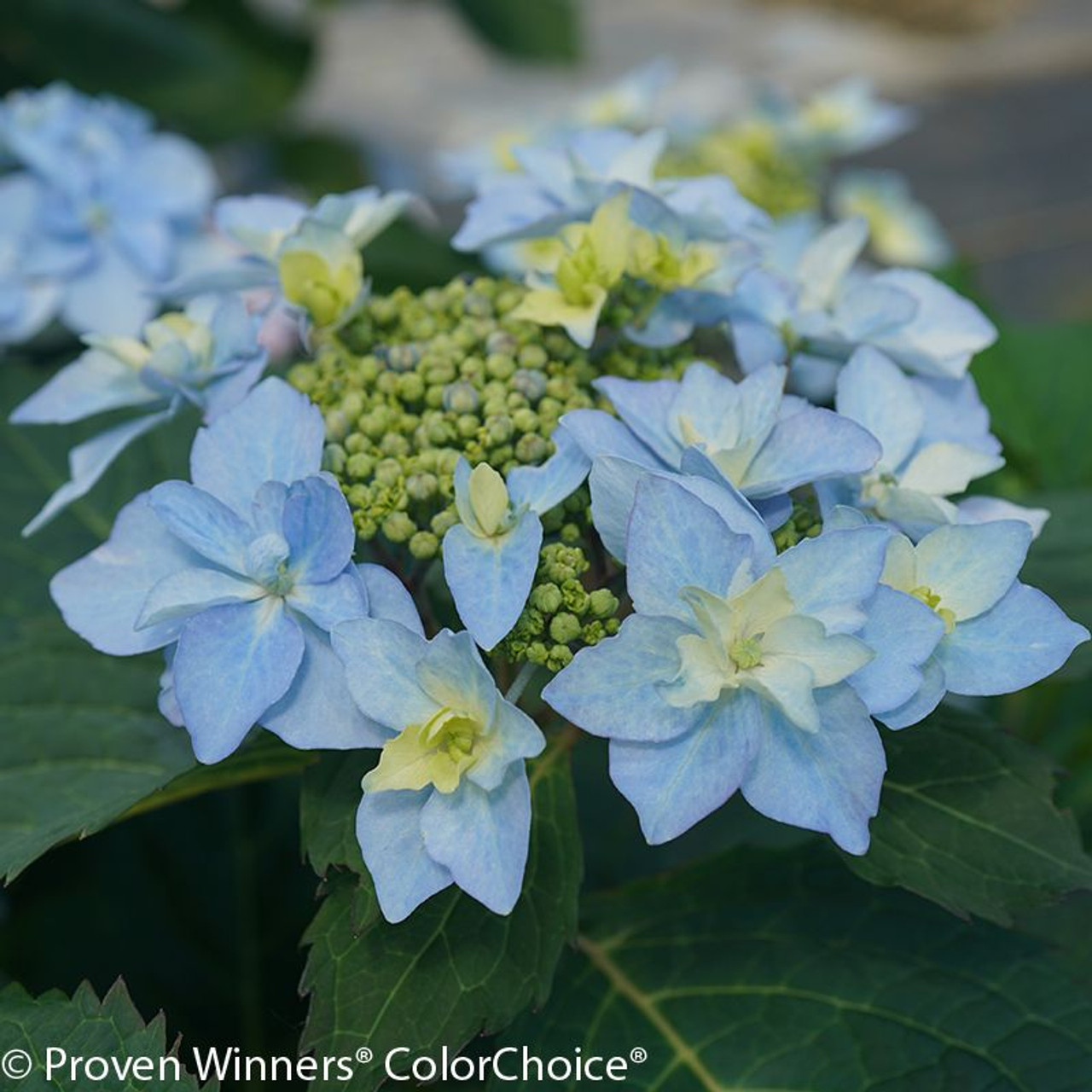

What Is the Best Color Changing Foundation
Source: https://plantaddicts.com/changing-the-color-of-hydrangeas/